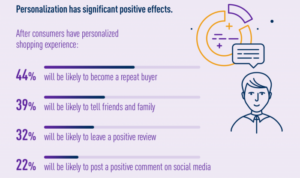Maximizing Return on Ad Spend dives into the world of digital marketing, offering insights on boosting ROI through effective advertising strategies. From understanding the importance of ROAS to implementing optimization techniques, this topic covers it all.
Understanding Return on Ad Spend (ROAS): Maximizing Return On Ad Spend
Return on Ad Spend (ROAS) is a crucial metric in digital marketing that helps businesses evaluate the effectiveness of their advertising campaigns. It measures the revenue generated for every dollar spent on advertising.
Calculation and Significance of ROAS
ROAS is calculated by dividing the revenue generated from advertising by the cost of the advertising. The formula can be represented as:
(Revenue from Ad Campaign / Cost of Ad Campaign) = ROAS
A higher ROAS indicates that the advertising campaign is generating more revenue compared to the cost, making it a profitable investment for the business.
Variability of ROAS Across Campaigns
ROAS can vary across different advertising campaigns based on various factors such as the target audience, ad placement, creative content, and the effectiveness of the marketing channel. For example, a social media ad campaign targeting younger demographics may have a higher ROAS compared to a display ad campaign targeting a general audience. Understanding these variations can help businesses optimize their advertising strategies to maximize returns.
Factors Influencing ROAS

When it comes to maximizing Return on Ad Spend (ROAS), there are several key factors that can greatly influence the outcome. Factors such as targeting, ad creative, landing page experience, seasonality, market trends, ad placement, and bidding strategies all play a crucial role in determining the success of a campaign.
Targeting
Targeting the right audience is essential for improving ROAS. By reaching the right people with your ads, you can increase the likelihood of conversions and ultimately improve your return on investment.
Ad Creative
The quality and relevance of your ad creative can have a significant impact on ROAS. Compelling visuals, engaging copy, and a clear call-to-action can all contribute to higher conversion rates and improved ad performance.
Landing Page Experience
A seamless and user-friendly landing page experience is key to converting ad clicks into sales. Optimizing your landing pages for conversions can help enhance ROAS by ensuring that visitors are more likely to take the desired action.
Seasonality and Market Trends
Seasonal fluctuations and market trends can also influence ROAS. Understanding how consumer behavior changes throughout the year and staying updated on industry trends can help you adjust your advertising strategies accordingly to maximize returns.
Ad Placement and Bidding Strategies
Effective ad placement and bidding strategies are crucial for optimizing ROAS. Choosing the right placement for your ads and implementing smart bidding strategies can help you reach your target audience more effectively and improve the overall performance of your campaigns.
Strategies for Maximizing ROAS
To maximize Return on Ad Spend (ROAS), it is crucial to implement effective strategies that can optimize ad campaigns for higher returns. By comparing and contrasting different bidding models like cost-per-click (CPC) and cost-per-acquisition (CPA), businesses can determine which approach works best for their goals. Additionally, utilizing A/B testing and optimizing ad copy are essential practices to improve ROAS and drive better results.
Optimizing Ad Campaigns
- Utilize targeted s and audience segmentation to reach the right customers.
- Regularly monitor and adjust ad performance based on key metrics like click-through rates and conversion rates.
- Experiment with different ad formats and placements to identify the most effective channels for driving conversions.
Cost-per-Click (CPC) vs. Cost-per-Acquisition (CPA), Maximizing Return on Ad Spend
- Cost-per-Click (CPC): In this model, advertisers pay each time a user clicks on their ad. It is useful for increasing website traffic and brand awareness.
- Cost-per-Acquisition (CPA): With CPA, advertisers only pay when a specific action is completed, such as a purchase or form submission. This model focuses on driving conversions.
- Effectiveness: While CPC can generate immediate results, CPA is more focused on driving high-quality leads and conversions.
A/B Testing and Ad Copy Optimization
- Conduct A/B tests to compare different ad creatives, headlines, and call-to-action buttons to identify the most effective combinations.
- Optimize ad copy by focusing on clear messaging, strong CTAs, and relevant s to attract and engage your target audience.
- Continuously analyze and refine ad performance based on data insights to improve ROI and maximize ROAS.
Tracking and Measuring ROAS

Tracking and measuring Return on Ad Spend (ROAS) accurately is crucial for businesses to optimize their advertising strategies and maximize profitability. By utilizing the right tools and techniques, businesses can gain valuable insights into the effectiveness of their ad campaigns and make data-driven decisions to enhance ROAS.
Tools and Techniques for Tracking ROAS
- Utilize Google Analytics and other web analytics platforms to track conversions and attribute them back to specific ad campaigns.
- Implement conversion tracking pixels or tags provided by advertising platforms like Facebook Ads or Google Ads to track the performance of individual ads.
- Use UTM parameters in ad URLs to track the source of website traffic and attribute conversions accurately.
Importance of Attribution Models
Attribution models play a significant role in measuring the true impact of ad spend on ROAS by assigning credit to different touchpoints along the customer journey. Businesses can utilize various attribution models such as first-click, last-click, linear, or time decay to understand how each interaction contributes to conversions and ROAS.
Leveraging Data Analytics for ROAS Improvement
- Employ predictive analytics to forecast future ROAS based on historical data and optimize ad spend allocation for maximum returns.
- Segment your audience based on behavior, demographics, or other factors to tailor ad campaigns for higher ROAS among specific customer segments.
- Analyze the lifetime value of customers acquired through different ad channels to determine the most profitable acquisition sources and invest resources accordingly.





